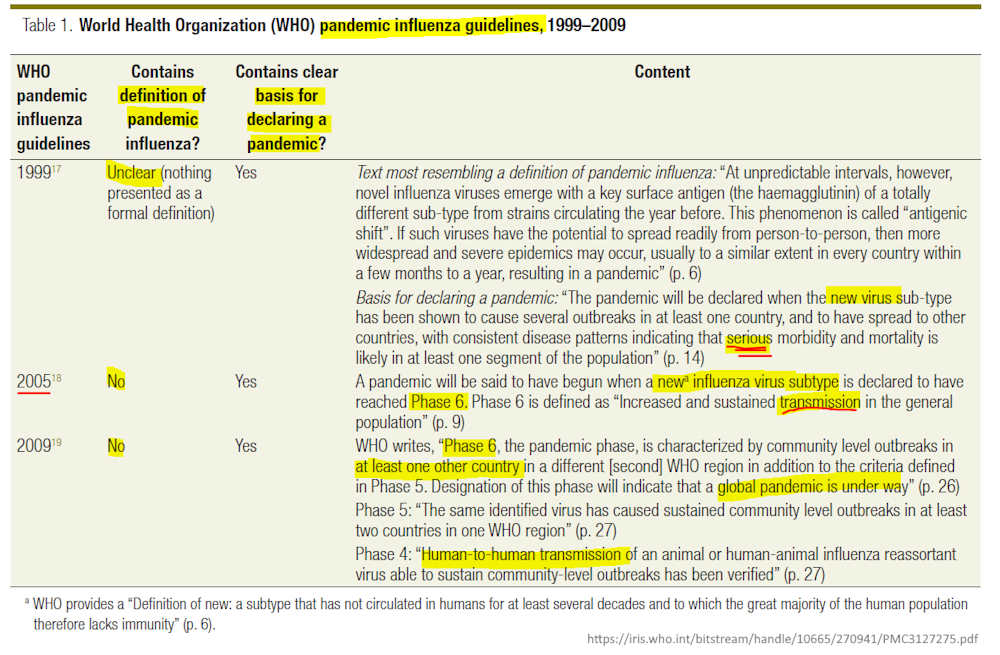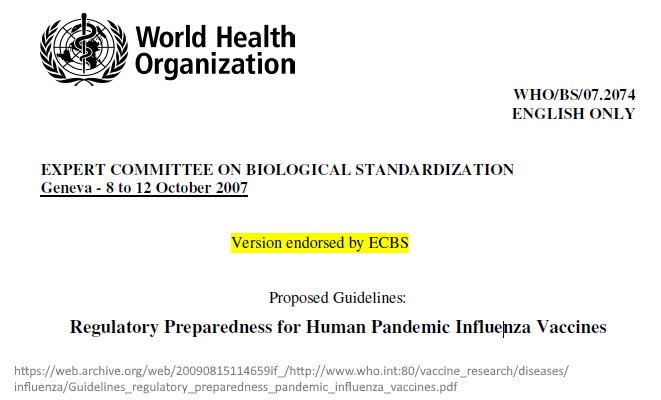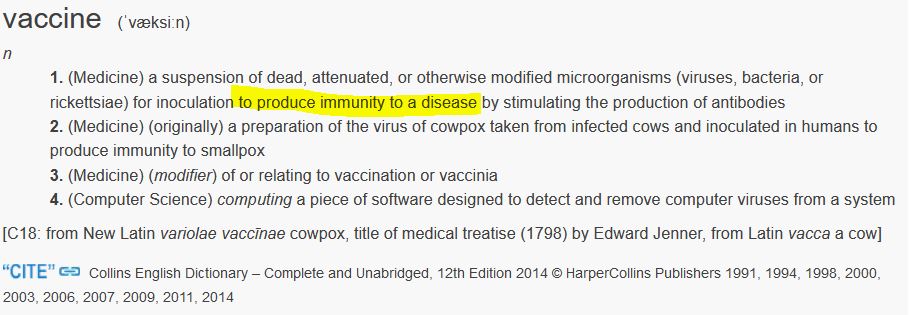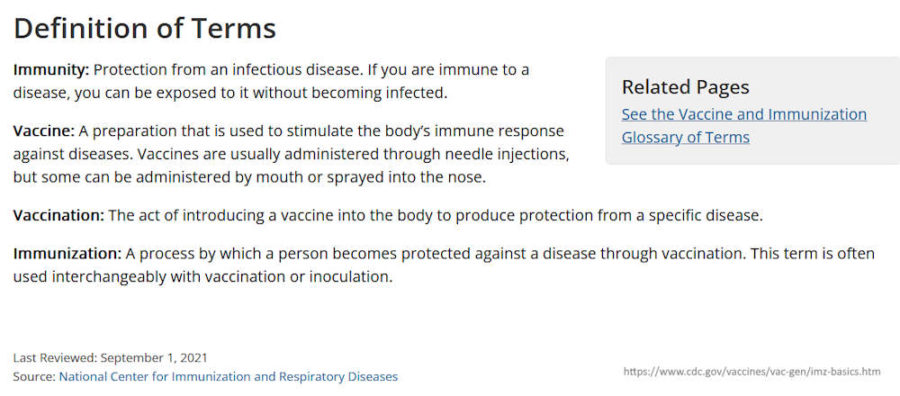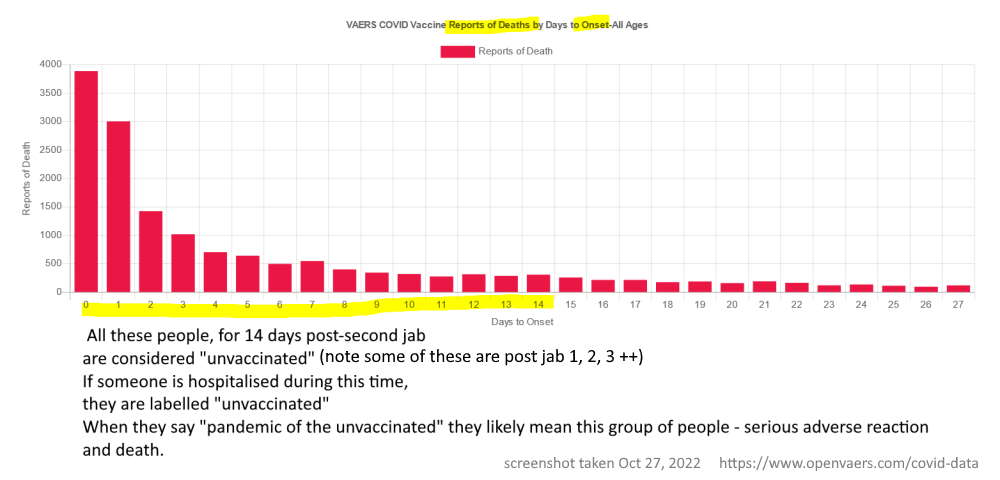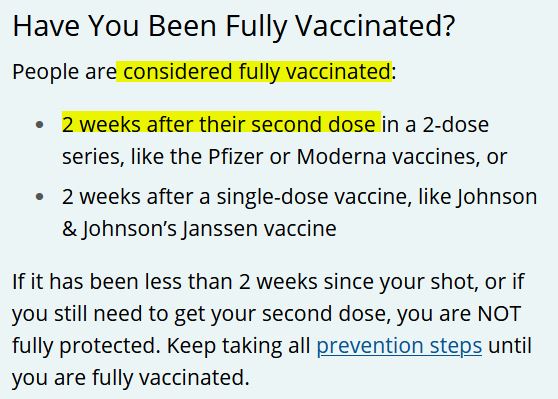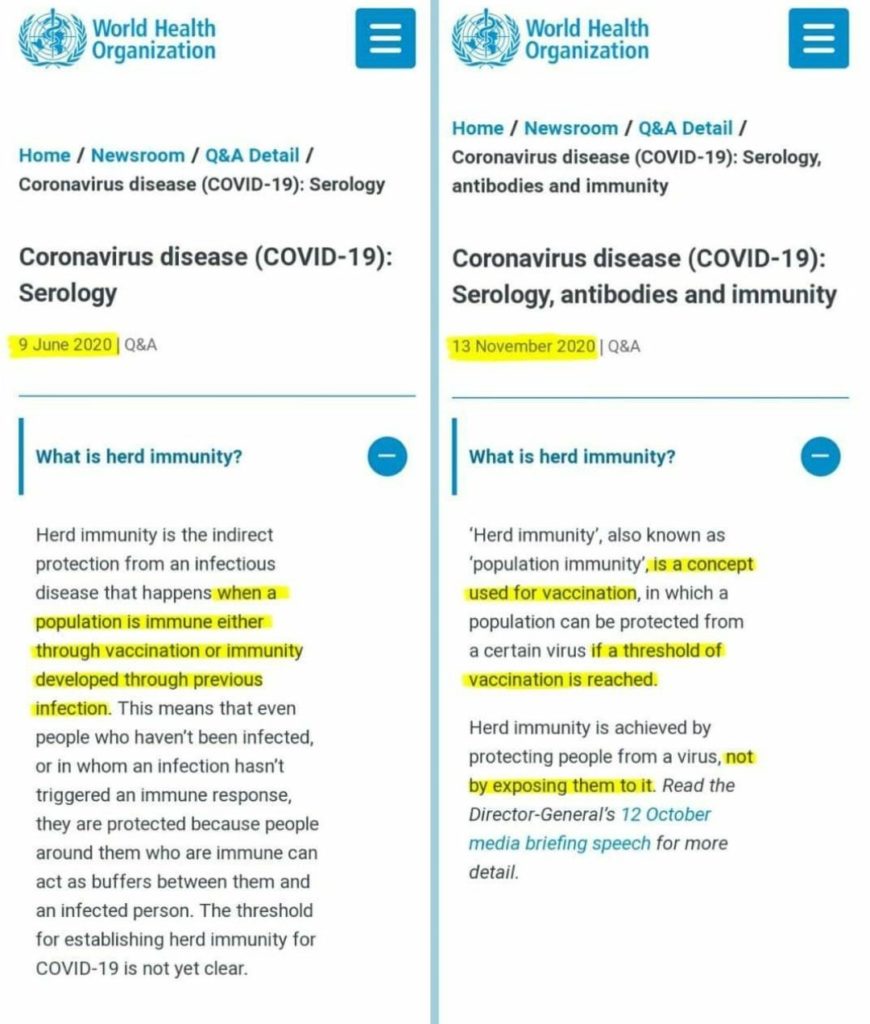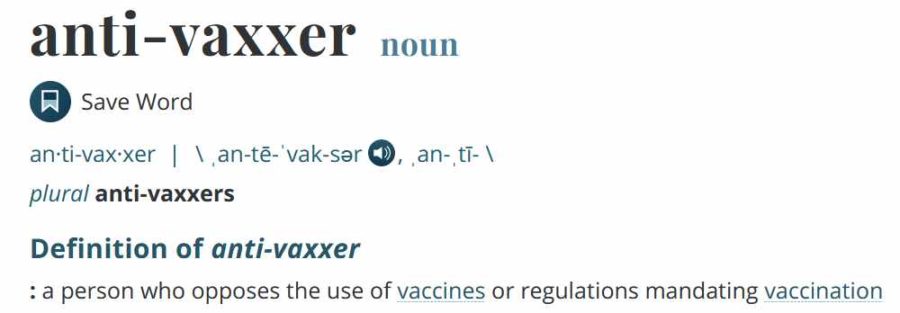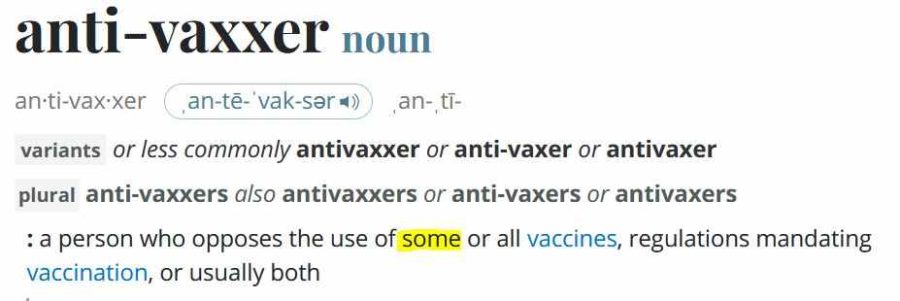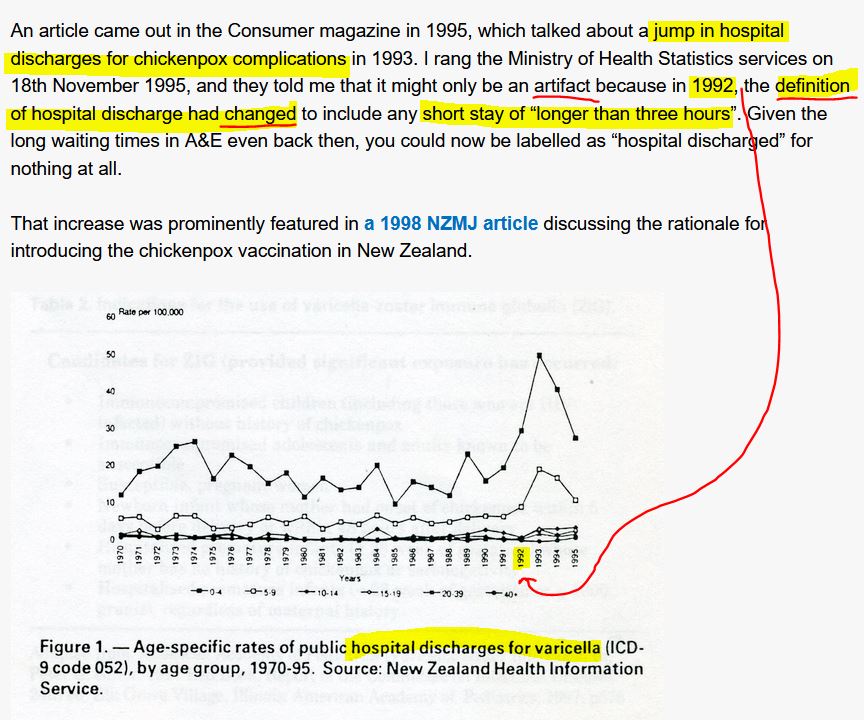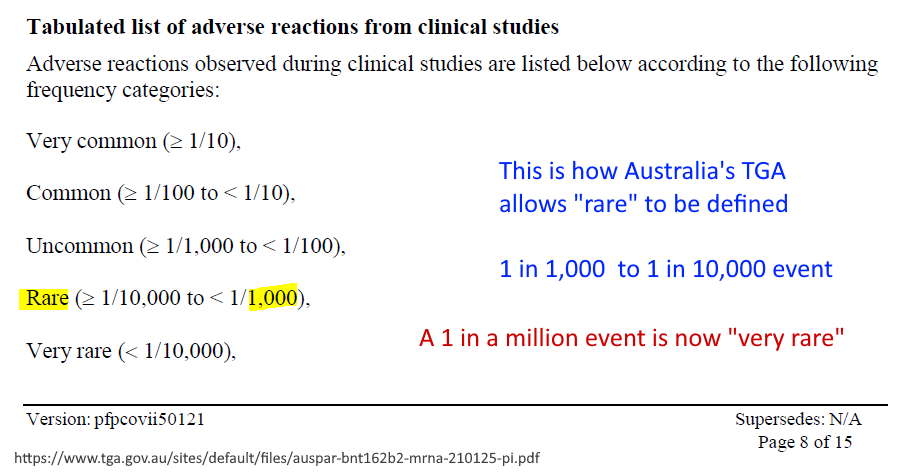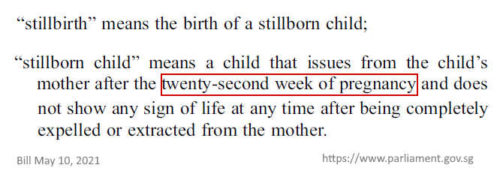The COVID-19 pandemic, with the aid of the mainstream legacy media, promoted ‘cultural’ narratives that as they gained traction it was revealed, in real time, that long standing definitions began to change. This manipulation appeared to serve the purpose of justifying health policies and instilling fear (and confusion) among the trusting public.
Long-standing definitions that were manipulated during or leading up to the COVID-19 era:
Definitions are in no particular order
- Pandemic
- Vaccine
- Vaccination
- Vaccinated
- Fully Vaccinated
- Unvaccinated
- “Vaccine Failure” according to Pfizer
- Herd Immunity
- Anti-vaxxer
- Case (diagnosis)
- Breakthrough Cases
- Gain-of-Function
- PCR
- Vaccine injury is “rare”
- COVID-19 the disease (symptoms) causal agent
- Polio
- Safe – re drug safety
- Stillborn Child or Stillbirth
- Woman & Pregnant Woman
- Female
- Pregnancy
- Sex (gender)
- Cancel culture
- Censorship
- Mis- Dis- & Mal- information
- Hospital discharge
- Recession
- FDA Clinical trial definitions/glossary (clinical outcome, endpoint etc) – ARCHIVE
Pandemic
In May 2009 the World Health Organisation (WHO) changed the criteria that should be met in order to declare a “pandemic“, as such they changed the definition of a “pandemic”. What does this mean in the minds of the masses when they hear the word “pandemic”? Do they associate “deadly” with the word, or do they see it register it as meaning just “geographical spread” of a “new disease” no matter it’s lethality? [MORE]

May 4, 2009 the words ““enormous numbers of deaths and illness” had been removed” – REF
- See timeline – May 6, 2009
WHO Feb 24, 2020 – “A pandemic is the worldwide spread of a new disease.” READ
- May 2009 – “The word pandemic refers to how widely dispersed a disease is, not to how severe the disease is,”… the definition of the word is “not set in stone.” said David Ozonoff, professor of environmental health at the Boston University School of Public Health – When a pandemic isn’t a pandemic – ARCHIVE
- February 2010 – Forbes: Why The WHO Faked A Pandemic – READ & WHO’s Convenient “Pandemic” – READ
- 2001- Bulletin of World Health Organisation: The elusive definition of pandemic influenza by Peter Doshi – PDF, CREDIT
- “WHO did not change its definition of pandemic influenza for the simple reason that it has never formally defined pandemic influenza. It has never established a formal definition and the criteria for declaring a pandemic caused by the H1N1 virus derived from “pandemic phase” definitions, not from a definition of “pandemic influenza”. Despite 10 years of pandemic preparedness activities, no formal definiton was formulated. – REF [They could just make it up!]
- October 2005 – “An influenza pandemic is a global outbreak of disease that occurs when a new influenza A virus appears or “emerges” in the human population, causes serious illness, and then spreads easily from person to person worldwide.” – ARCHIVE, ARCHIVE
Vaccine
BEFORE (Page last reviewed: May 16, 2018): “A product that stimulates a person’s immune system to produce immunity to a specific disease, protecting the person from that disease“
AFTER (Page last reviewed: September 1, 2021): “A preparation that is used to stimulate the body’s immune response against diseases.”
- Before: CDC Glossary – July 30, 2020 “Vaccine: A product that produces immunity therefore protecting the body from the disease.” – ARCHIVE
- After: CDC Glossary – August 16, 2020 – “Vaccine: A suspension of live (usually attenuated) or inactivated microorganisms (e.g. bacteria or viruses) or fractions thereof administered to induce immunity and prevent infectious diseases and their sequelae.” – ARCHIVE
- WHO and Gavi accept the CDC’s vaccine definition as “A product that stimulates a person’s immune system to produce immunity to a specific disease, protecting the person from that disease” – 2015 SLIDE 4 [A Must Read!]
TGA reference to what is a vaccine and vaccination – ARCHIVE
- Peter Doshi PhD – on What is a Vaccine? – Webster dictionary changed its definition of “vaccine” as mRNA products did not meet the definition – changed Jan 26, 2021, and Oct 23, 2021 – SLIDE
An interesting fact for Australians. We have federal legislation the Therapeutics Goods Act and the Therapeutics Goods Regulations which the TGA follows to approve products for Registration or Provisional Registration. Within the Act and Regulations a “vaccine” is not defined, but there is a committee called the Advisory Committee on Vaccines (ACV) that assesses the data that “sponsors” submit for registration of a vaccine. But who determines whether a product can be assessed as a vaccine versus a drug/medicine and on what criteria is this assessed?
Vaccines provide “immunity against infectious disease”, or at least those with adjuvants do!
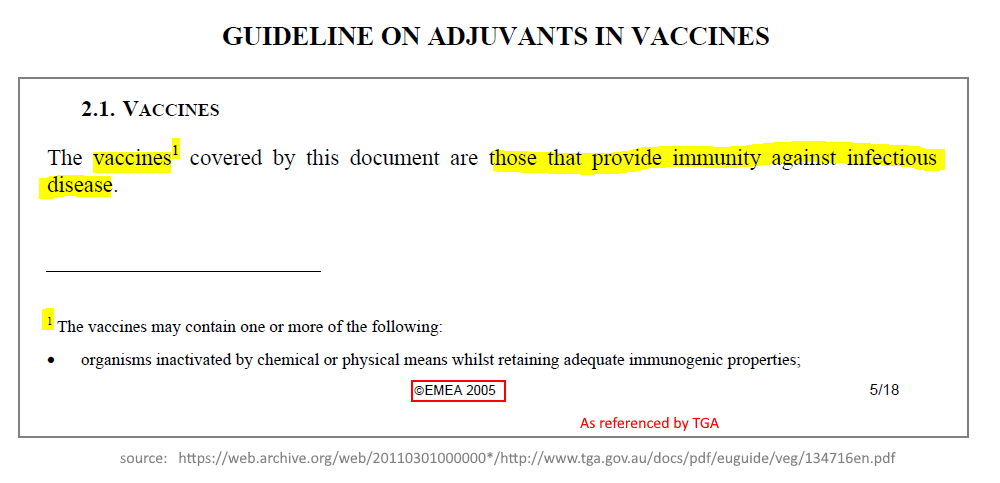
The Free Dictionary hasn’t received the “memo” – Vaccine confers “immunity”
World Health Organisation publication 2000 defines Vaccine as
- 1) “Biological substance that is administered to individuals to elicit immunity (protection) against a specific disease”
- 3) “The vaccine virus causes a mild infection, usually with no or minimal symptoms, that creates immunity against that virus“
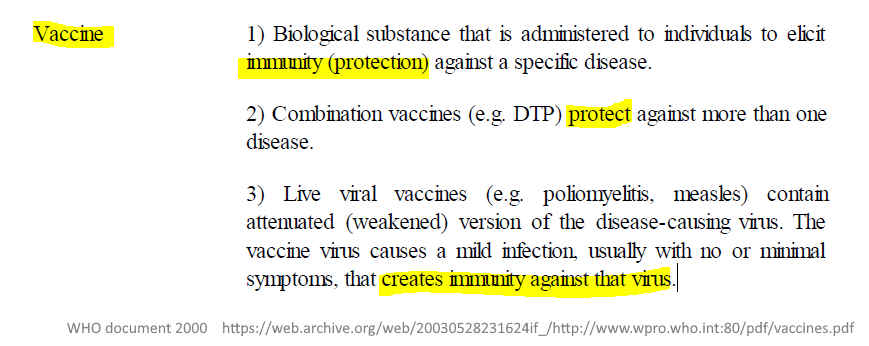
WHO – April 5, 2006 “Vaccines – which protect against disease by inducing immunity” – REF
CDC – Vaccine can now be ‘or genetic material’ – READ
Vaccination
Vaccination:
BEFORE: The act of introducing a vaccine into the body to produce immunity to a specific disease.
AFTER: The act of introducing a vaccine into the body to produce protection from a specific disease.
Note the CDC’s definition of immunity: If you are immune to a disease, you can be exposed to it without becoming infected!
Vaccinated
Vaccinated: This used to be someone who has received a vaccine, but for a COVID-19 vaccine, you are not considered vaccinated until a set number of days after receiving a particular dose. CDC’s definition 14 days post second dose, prior to that you are “unvaccinated”. “Pandemic of the unvaccinated” – WATCH
If you have a reaction to the vaccine and are hospitalised or die within that 14 day period, you would be considered “unvaccinated”, according to the CDC definition! How does this affect the statistics? (WATCH)
But also remember the official treatment protocol for COVID-19 is do nothing until the patient can’t breathe, then go to hospital.
“Fully Vaccinated” changes to “Stay up to Date”
On March 8, 2021 the CDC added the term “fully Vaccinated” – ARCHIVE Nov 2021 – ARCHIVE
According to the CDC “people are considered fully vaccinated:
- 2 weeks after their second dose in a 2-dose series, such as the Pfizer or Moderna vaccines, or
- 2 weeks after a single-dose vaccine, such as Johnson & Johnson’s Janssen vaccine”
But when boosters were introduced they eventually removed “fully vaccinated” and moved to the term “Get Vaccinated Stay up to date” [ARCHIVE]. The time between boosters moved from 6 months down to only 3 months, which using fully vaccinated became a cumbersome and comfusing term.
On January 5, 2022 The CDC no longer use the term Fully Vaccinated but have replaced it with “Stay up to date” – ARCHIVE , which is also used by Australia’s ATAGI. –
The CDC linked fully vaccinated with being able to go back to normal: “people who have been fully vaccinated can do things that they had stopped doing because of the pandemic.”
Note ATAGI have introduced “primary dose 3” which used to be booster dose 1! See Table 1 HERE
Nov 8, 2021 – Australia TGA: “‘Fully vaccinated‘ means a person has received the required dose(s) of a COVID-19 vaccine under the national COVID-19 vaccination program to be considered fully vaccinated in accordance with the recommendations made by the Australian Sponsor of the relevant vaccine.” – REF
Immunization/Immunisation
“Immunization is the process whereby a person is made immune or resistant to an infectious disease, typically by the administration of a vaccine. Vaccines stimulate the body’s own immune system to protect the person against subsequent infection or disease” ~2011 – ARCHIVE
Unvaccinated
Pandemic of the “unvaccinated” – but what does that really mean?
CDC state: “Most people who get COVID-19 are unvaccinated.”
Prior to the COVID-19 vaccine rollout when someone received a vaccine (injected into their limb) they were considered vaccinated.
Post the COVID-19 vaccine rollout suddenly you are considered “unvaccinated” for 14 days post your injection, or if you have not had the injection at all! These are two separate cohorts that are being statistically lumped together and skewing the real story.
If in those 14 days post vaccine administration you happen to have an adverse reaction or you got infected or returned a positive PCR test, per CDC definition the medical system will count you as “unvaccinated”!!!
- If you get COVID-19 during the 14 days post jab you are considered “unvaccinated”
- If you die during the 14 days post jab you are considered “unvaccinated”
- If you get hospitalised during the 14 days post jab you are considered “unvaccinated”
Now consider the consequence of this “unvaccinated” status for cases , hospitalisations and deaths that occur within the14 day window post injection! – WATCH
“Vaccine Failure”
October 11, 2023 – Daily Clout: Report 88: 2.5 Months After COVID Vaccine Rollout, Pfizer Changed Criteria for ‘Vaccination Failure,’ Causing 99% of Reported Cases to Not Meet That Definition. 3.9% of Reported ‘Lack of Efficacy’ Cases Ended in Death in First 90 Days of Public Vaccine Availability – READ , more Pfizer FOIA documents HERE
- On February 15, 2021 Pfizer adopted a new definition of “vaccination failure” now requiring all three of the following criteria to be met:
- Both doses received per local regime.
- At least seven days since the second dose.
- Infection with confirmed lab test positive for SARS-CoV-2.
- Revising the criteria for vaccination failure likely allowed Pfizer to shift “lack of efficacy” (LOE) cases out of the “vaccination failure” category and into “drug ineffective” category—with many unknowns and 98.5% of the “drug ineffective” cases were serious.
Herd Immunity
WHO attempted to change the definition of “herd immunity” in October 2020 to be attributed to vaccination only, totally discounting broad spectrum immunity that the body produces when it is infected naturally with a pathogen such as a virus. This was met with resistance and changed a few months later to include natural infection. [SOURCE] WATCH
WHO (Oct 15, 2020) -‘Herd immunity’, also known as ‘population immunity’, is a concept used for vaccination, in which a population can be protected from a certain virus if a threshold of vaccination is reached. – LINK
WHO (Dec 31, 2020) – ‘Herd immunity’, also known as ‘population immunity’, is the indirect protection from an infectious disease that happens when a population is immune either through vaccination or immunity developed through previous infection. LINK
Another before and after example:
WHO (June 9, 2020) – Before – HERE
WHO (Nov 13, 2020) – After – HERE
Which on Dec 31, 2020 they returned the definition to include natural infection – HERE
November 2018 – Oxford Vaccine Group, sponsored by Wellcome, explains herd immunity/protection – WATCH, SOURCE
Case
Suddenly in 2020 a disease “case” could be attributed to a healthy (not sick), asymptomatic (not symptoms) person who simply receives a positive result from a PCR test, a test which is not designed to diagnosed, is known to have a high false positive rate, and historically would be used to confirm a disease not diagnose that someone has a disease!
A “case” used to refer to someone who was sick, at a minimum has some type of symptomology.
December 29, 2021 – Probability & Law: Covid-19: Definitions matter – and these are REAL by Prof Norman Fenton – READ
Breakthrough Cases
As of May 14, 2021 the CDC will only report breakthrough cases that result in hospitalization or death. A vaccinated person who then gets COVID-19 is considered a breakthrough case. From this time the CDC also announce they would only cycle the PCR test to 28 cycles….where previously it went up to 40 to 45 cycles. – ARTICLE
CDC Breakthrough cases – Apr 2021 – HERE, May 2021 – HERE
Anti-vaxxer
According to the new Webster dictionary definition, an “anti-vaxxer” is effectively anyone who is against mandatory vaccination, whether they get vaccinated or not! – LINK, Webster Dictionary – LIVE
Before (2018): “a person who opposes vaccination or laws that mandate vaccination.”
After:
- October 29, 2021 “a person who opposes the use of vaccines or regulations mandating vaccination” – ARCHIVE
- September 1, 2022 changed again to “who opposes the use of some or all vaccines…” – ARCHIVE
- Anti-vaccination dates back 150+ years, the moment mandates imposed, it’s not new (EXAMPLE), and then as new bacterial soups emerged in the late 1800’s to early 1900s (EXAMPLE). An anti-vaxxer is not a new concept!
Gain of Function
According to web archives on October 21, 2021 the NIH set up a new web page titled “Research Involving Enhanced Potential Pandemic Pathogens” which the previous web page called “Gain-of-Function Research Involving Potential Pandemic Pathogens” now redirect to the new “definition”. [1, 2]
Gain of Function definition has been replaced with “enhanced potential pandemic pathogen (ePPP) research a type of so called ‘Gain-of-Function’ (GOF) research”.
Gain-of-Function Research
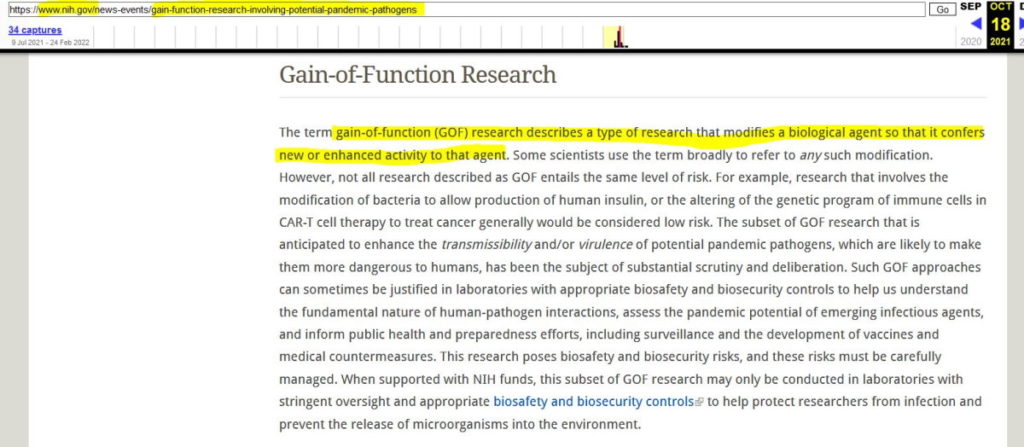
Research Involving Enhanced Potential Pandemic Pathogens (ePPP)
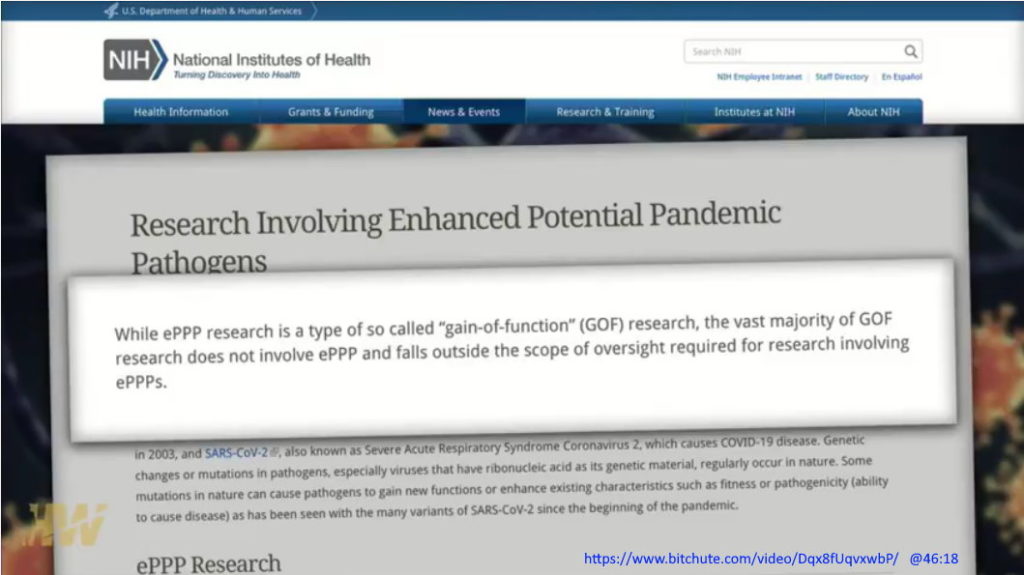
This update occurred a day after the NIH’s principal deputy director, Lawrence A. Tabak, wrote a letter, dated 20 Oct, 2021, to Rep. James Comer confirming “EcoHealth and the WIV conducted GOF research on bat coronaviruses” – ARTICLE, TWEET
August 8, 2016 – Science and Engineering Ethics: Gain-of-Function Research: Ethical Analysis – READ
PCR – polymerase chain reaction
In October 2004 the US National Institute of Health – Genome division defined PCR as “A fast, inexpensive technique for making an unlimited number of copies of any piece of DNA. Sometimes called “molecular photocopying”
In 2020 PCR became a “diagnostic test”, especially in healthy, asymptomatic people! – TIMELINE
Australian health officials can’t provide the definition of a woman!
Two days earlier US Representative Madison Cawthorn provided the Democrats with the definition: ‘the definition of a woman is ‘XX chromosomes’ and ‘no tallywacker'”! – WATCH
Woman and Pregnant Woman
Since naturally high-testosterone producers, formally “male” who now “identify” as a woman (think swimming), have muddied the waters of what a woman is, the “liberals” are choosing to now refer to a women as “menstruating people” and a pregnant woman as “pregnant people” or “birthing people”. [1]
Female
Around September 29, 2020 the Merriam-Webster dictionary changed its definition of “female” to “gender identity which is the opposite of male” – READ, SOURCE
June 30, 2020 – ARCHIVE
September 29, 2020 – ARCHIVE
Pregnancy
Pregnancy may no longer be “a condition unique to biological females”! (Aug 7, 2022) – READ
Sex (gender)
On July 6, 2022 the World Health Organisation (WHO) updated it’s 2011 gender guidance document used by public health officials. – ARTICLE
Stating “sex is not limited to male or female.”
Cancel Culture
”Cancel culture or call-out culture is a modern form of ostracism in which someone is thrust out of social or professional circles – whether it be online, on social media, or in person. Those subject to this ostracism are said to have been “cancelled”“ [source]
Censorship
”Censorship is the suppression of speech, public communication, or other information. This may be done on the basis that such material is considered objectionable, harmful, sensitive, or “inconvenient”. Censorship can be conducted by governments, private institutions and other controlling bodies. Governments and private organizations may engage in censorship.” [source]
Mis- Dis- & Mal- information
The US government cybersecurity agency have defined the following “information activities”:
- Misinformation is false, but not created or shared with the intention of causing harm.
- Disinformation is deliberately created to mislead, harm, or manipulate a person, social group, organization, or country.
- Malinformation is based on fact, but used out of context to mislead, harm, or manipulate
Hospital Discharge
In New Zealand in 1992, the changing of the definition of what constituted a “hospital discharge”, could have helped to justify the adding of the Chicken pox vaccine to their “immunisation” schedule. A change to how hospital discharge is defined created a spike in the data, making it appear that hospitalisation for chicken pox increased!
Recession
July 2022 – The long standing definition of a “recession” was attempted to be changed by the White House days before the quarterly report was released – WATCH, Ed Dowd – WATCH, Election consequences of their change in definition – Tucker Carlson – WATCH
The historical definition (which is around 80 years old) is that two consecutive quarters of negative GDP growth is a recession. [1, 2] Experts denying the US is in recession, that the strong job market indicates the economy is just fine. [Are there lots of jobs because of jab mandate firings and excess mortality?] [1]
Wikipedia attempting to change the definition of Recession – GETTR, Check for yourself – HERE
Vaccine injury is “rare”
I bet most people believe when the media state vaccine injuries are “rare” in their mind they believe it’s like a one in a million chance event. WRONG
The TGA have allowed pharmaceutical companies to define rare as less than or equal to 1 in 10,000 down to less than 1 in 1,000 event. So if for example myocarditis occurs 1 in every 2,500 to 5,000 children, that is defined as “rear”.
COVID-19 – The Disease i.e. symptoms
Though not an official re-defining of COVID-19, I think this image by Matthew Crawford in time will prove to be correct – SUBSTACK, Spike Protein [likely designed in a lab] has a lot to answer for!
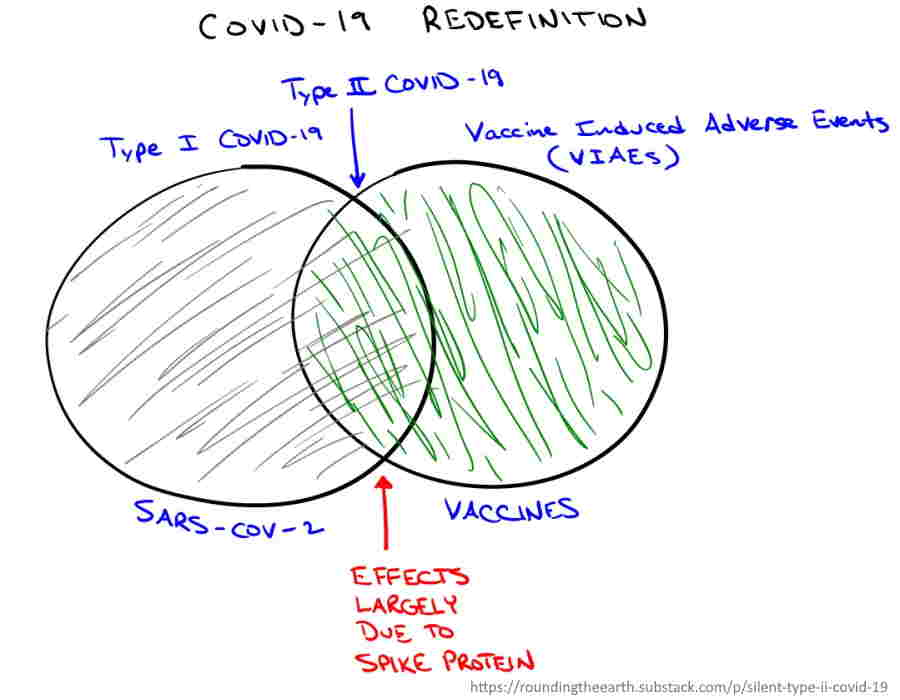
Paralytic Poliomyelitis
Full credit to Dissolving Illusions by Suzanne Humphries & Roman Bystrianyk – Page 230-233
Before: n 1954 (before the vaccine) the poliomyelitis was diagnised by doctors with out any laboratory confirmation or presence of “residual [longer than 24 hours]” paralysis – which could be any paralytic disease from DDT, arsenic or lead poisoning to syphilis, GBS, or limb paralysis by intramuscular injection. As such “many distinct diseases were naively grouped under the umbrella of ‘polio'”
After: “Only after the [Salk polio] vaccine was widely accepted was there an effort to distinguish poliovirus from other types of paralytic disease”. From 1955, the year the Salk vaccine was introduced, a polio diagnosis required the presence of paralysis for at least 60 days. It wasn’t until 1958 that laboratory confirmitory test was introduced.
Add to this a vaccinated person was more likely to get a diagnosis of a “non-polio illness”. All giving the appearance that the vaccine reduced the incidence of polio, but it was mostly “due to the power of the pen”.
Safe – Drug Safety
March 27, 2015 – ICH Common Technical Document (CTD): The International Committee for Harmonisation (ICH) a regulator-pharma industry partnership Make the following comments about what “Safe” means: – PDF, ARCHIVE, creating M4E(R2) updating September 2002 CTD, which “has not kept pace with this progress” – ARCHIVE
The meaning of “safe” has historically been interpreted to mean that the benefits of the drug outweigh its risks. The benefit-risk assessment is the fundamental basis of regulatory decision making.
June 7, 2021 – Dept Health: New regulatory arrangements support businesses and health professionals to communicate and incentivise COVID-19 vaccination – READ, ARCHIVE, Phil Altma – CREDIT
- You can’t claim a therapeutic goods is “safe” unless it is a COVID-19 vaccine which received “permission” to make such “claims”.
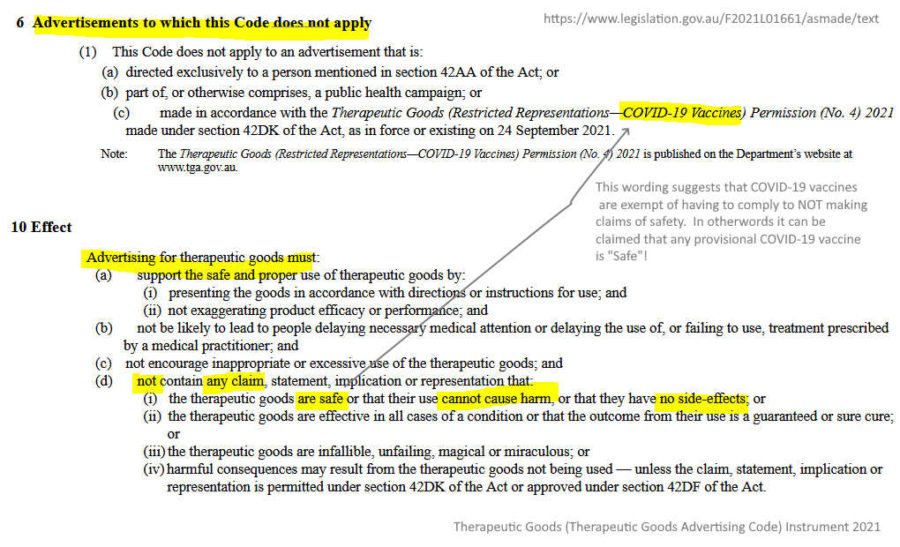
Stillbirth or Stillborn Child
Defining stillbirth is important when tracking Pregnancy Loss
Stillbirth definitions vary between countries around the globe. – REF
In the US Stillbirth is a foetal death from 20 weeks gestation, prior to 20 weeks it has traditionally been considered a miscarriage – WATCH
World Health Organiation: “A baby who dies after 28 weeks of pregnancy, but before or during birth, is classified as a stillbirth.” – READ
On May 10, 2021 Singapore changed the definition of Sillborn Child to no longer be 20 weeks, but now 22 weeks – PDF, CREDIT


